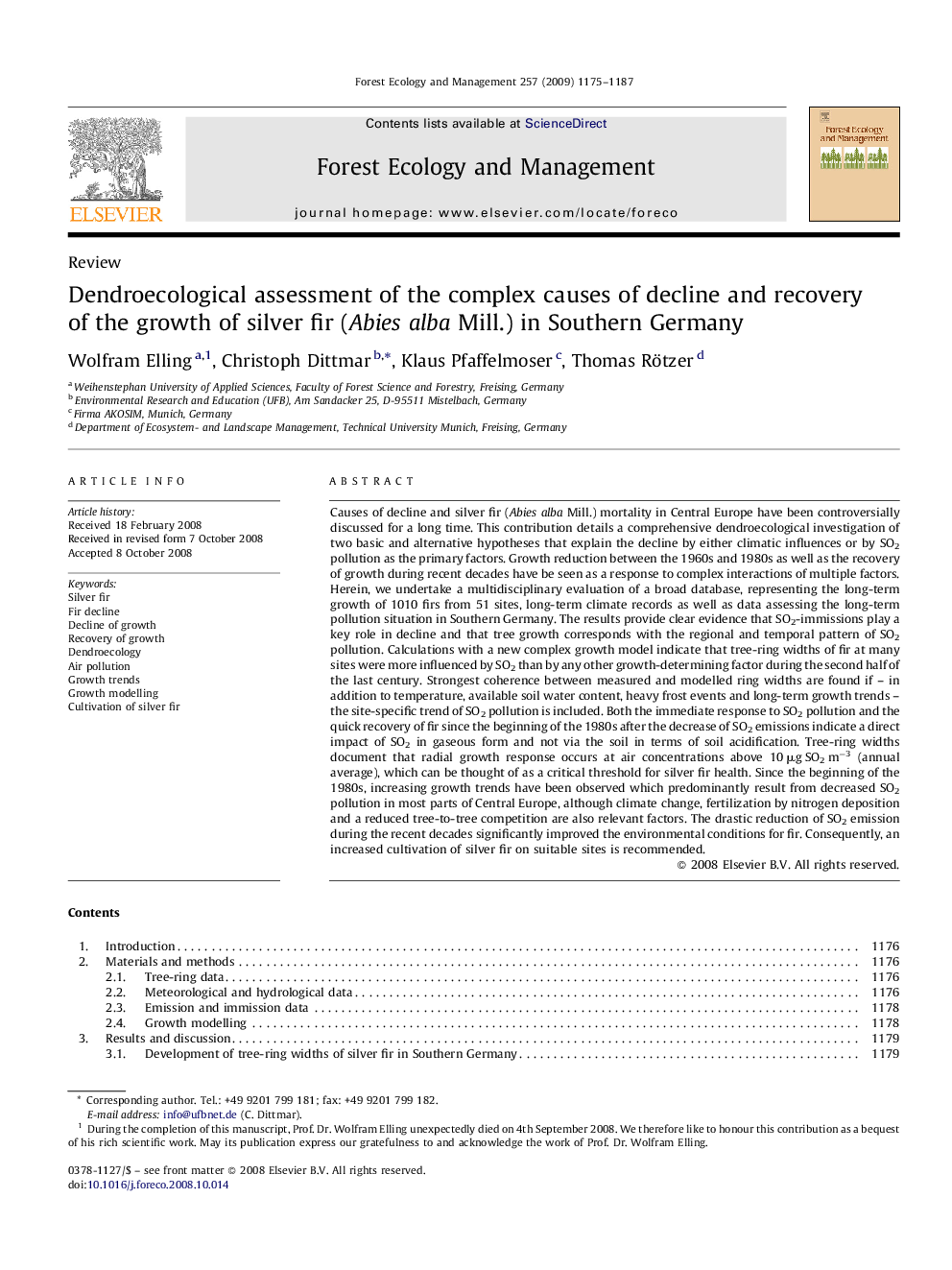| کد مقاله | کد نشریه | سال انتشار | مقاله انگلیسی | نسخه تمام متن |
|---|---|---|---|---|
| 88589 | 159310 | 2009 | 13 صفحه PDF | دانلود رایگان |

Causes of decline and silver fir (Abies alba Mill.) mortality in Central Europe have been controversially discussed for a long time. This contribution details a comprehensive dendroecological investigation of two basic and alternative hypotheses that explain the decline by either climatic influences or by SO2 pollution as the primary factors. Growth reduction between the 1960s and 1980s as well as the recovery of growth during recent decades have be seen as a response to complex interactions of multiple factors. Herein, we undertake a multidisciplinary evaluation of a broad database, representing the long-term growth of 1010 firs from 51 sites, long-term climate records as well as data assessing the long-term pollution situation in Southern Germany. The results provide clear evidence that SO2-immissions play a key role in decline and that tree growth corresponds with the regional and temporal pattern of SO2 pollution. Calculations with a new complex growth model indicate that tree-ring widths of fir at many sites were more influenced by SO2 than by any other growth-determining factor during the second half of the last century. Strongest coherence between measured and modelled ring widths are found if – in addition to temperature, available soil water content, heavy frost events and long-term growth trends – the site-specific trend of SO2 pollution is included. Both the immediate response to SO2 pollution and the quick recovery of fir since the beginning of the 1980s after the decrease of SO2 emissions indicate a direct impact of SO2 in gaseous form and not via the soil in terms of soil acidification. Tree-ring widths document that radial growth response occurs at air concentrations above 10 μg SO2 m−3 (annual average), which can be thought of as a critical threshold for silver fir health. Since the beginning of the 1980s, increasing growth trends have been observed which predominantly result from decreased SO2 pollution in most parts of Central Europe, although climate change, fertilization by nitrogen deposition and a reduced tree-to-tree competition are also relevant factors. The drastic reduction of SO2 emission during the recent decades significantly improved the environmental conditions for fir. Consequently, an increased cultivation of silver fir on suitable sites is recommended.
Journal: Forest Ecology and Management - Volume 257, Issue 4, 20 February 2009, Pages 1175–1187